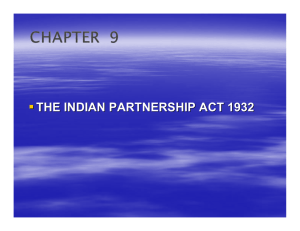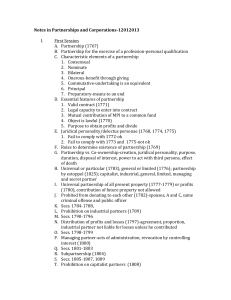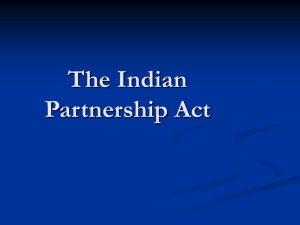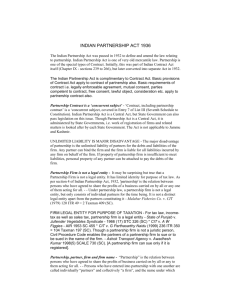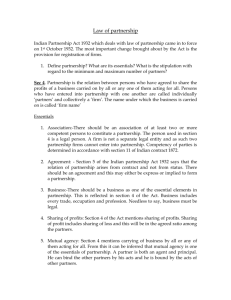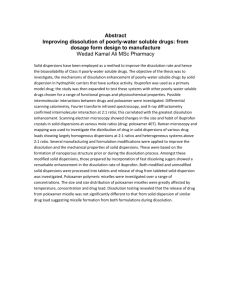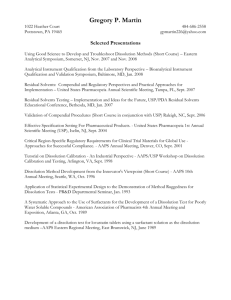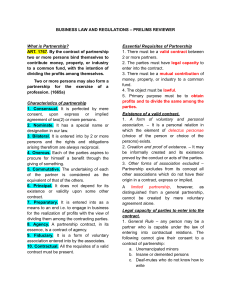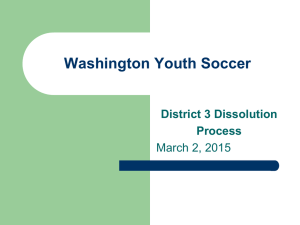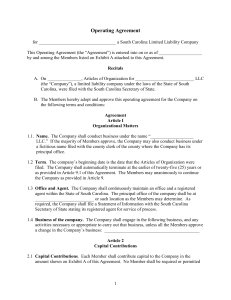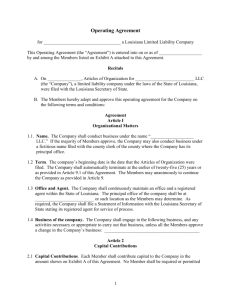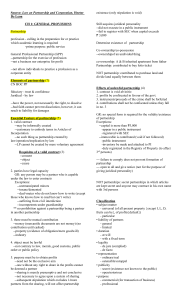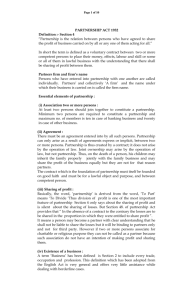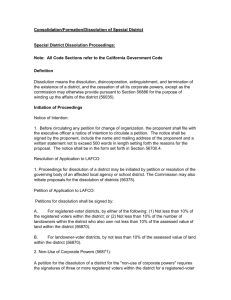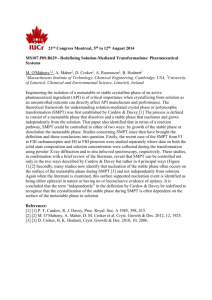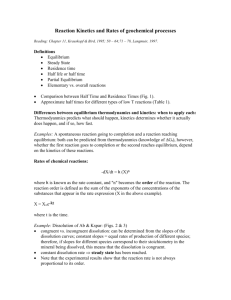Partnership Act 1932
advertisement
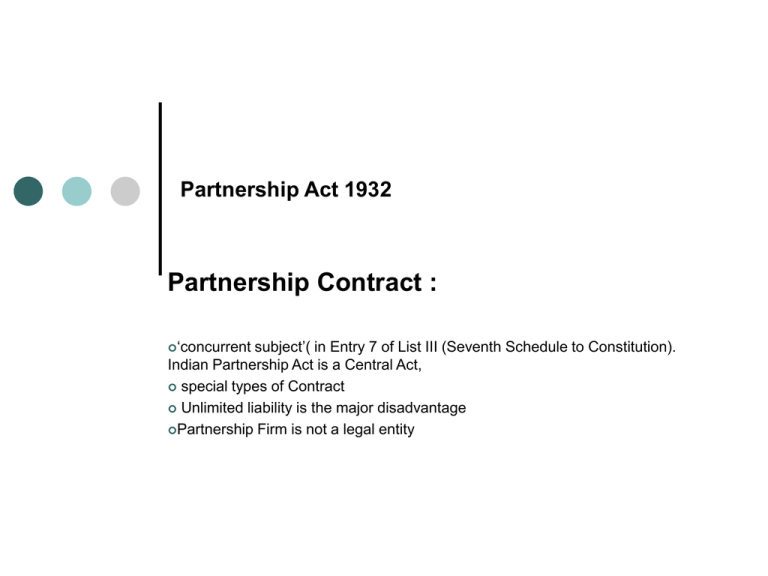
Partnership Act 1932 Partnership Contract : ‘concurrent subject’( in Entry 7 of List III (Seventh Schedule to Constitution). Indian Partnership Act is a Central Act, special types of Contract Unlimited liability is the major disadvantage Partnership Firm is not a legal entity Definition of partnership “Partnership is the relation between persons who have agreed to share the profits of a business carried on by all or any one of them acting for all.” ESSENTIALS OF A PARTNERSHIP AGREEMENT ASSOCIATION OF TWO OR MORE PERSONS SHARING OF PROFITS BUSINESS RELATION BETWEEN PARTNERS The No. of partners in a firm shall not exceed 20 partnership having more than 20 persons is illegal . When there is partnership between two firms, all the partners of each firm will be taken into account. If the partnership is between the karta or member of Hindu undivided family the members of the joint Hindu family will not be taken into account Essentials elaborated A. agreement competent to contract. the age of majority sound mind and is not disqualified from contracting by any law to which he is subject B The following can enter into a partnership INDIVIDUAL FIRM HINDU UNDIVIDED FAMILY COMPANY TRUSTEES MUTUAL AGENCY IS THE REAL TEST - The real test of ‘partnership firm’ is ‘mutual agency’, i.e. whether a partner can bind the firm by his act, i.e. whether he can act as agent of all other partners. Persons who have entered into partnership with one another are called individually “partners” and collectively “a firm”, and the name under which their business is carried on is called the “firm name Partnership Firm is not a legal entity - It may be surprising but true that a Partnership Firm is not a legal entity. It has limited identity for purpose of tax law. As per section 4 of Indian Partnership Act, 1932, 'partnership' is the relation between persons who have agreed to share the profits of a business carried on by all or any one of them acting for all. - - Under partnership law, a partnership firm is not a legal entity, but only consists of individual partners for the time being. It is not a distinct legal entity apart from the partners constituting it - Malabar Fisheries Co. v. CIT (1979) 120 ITR 49 = 2 Taxman 409 (SC). Difference between partnership and Company Regulating act Number of members Entity Liability Authority of members Management Transfer of Interest Audit Registration Winding Up Ownership of the property Agency shareholder not agents Contracting with the co. shareholder can do, partner cannot do with firm Ultra vires in Co., not so in Partnership Types of partnership Partnership at will Particular partnership( specific venture) Kinds of Partners Active / actual / ostensible partners: must give public notice of his retirement Sleeping/ dormant partners: undisclosed principal, have voice in Mgt .not required to give PNoR Silent partners: no voice in Mgt., fully liable for P/LPartner in profits only: No voice in Mgt. only for P. still not in India LLP Sub partner: A partner agrees to share his P with O/S this O/S is Sub Partner Partner by estoppel /holding out/ Quasi Partner/ Nominal Partner: No agreement but the person holds out, represents himself to be a partner, becomes responsible to O/s as partner. It is not necessary that representation must be made directly to the person so giving credit. Formation Of Partnerships May be formed by oral or written agreement All essential of valid contract be present Mutual rights and Obligation to be in Partnership Deed The deed to be registered Partnership Deed A partnership deed should contain the following clause Name of the parties Nature of business Duration of partnership Name of the firm Capital Share of partners in profits and losses Banking, Account firm Books of account Powers of partners Retirement and expulsion of partners Death of partner Dissolution of firm Settlement of disputes GENERAL DUTIES OF A PARTNER A. Absolute Duties carry on the business with common advantage just and faithful render true accounts to provide full information To indemnify for loss caused by fraud liable jointly and severally not to assign his interest B. Qualified duties Not to carry on business competing with the firm indemnify the firm for wilful neglect carry out the duties diligently to work without remuneration to contribute to losses Partners use firms property exclusively for the firm to account for personal profits derived RIGHTS OF THE PARTNERS To take part in the conduct and management of the business free access to all the records To express opinion in matters connected with the business share in the profits of the business To get interest on the payment of advance To be indemnified by the firm against losses or expenses Registration of Firms not compulsory Time of registration Procedure for registration Change of particulars Effects of non registration Procedure for registration sending by post /delivering to the Registrar of Firms of the area a statement in the prescribed form and accompanied by the prescribed fee, Signed by all partners/ agents Following to be in the application: The firm name the place or principal place of business of the firm; the names of any other places where the firm carries on business; the date when each partner joined the firm; the names in full and permanent addresses of the partners; and the duration of the firm Effects of non Registration No suit in a civil court by a partner against the firm or co partner No suit in civil court against third parties Firm or partners cannot make claim to set off other proceeding based upon a contract Registration of firms from IT is different from the above registration. For the purpose of assessment under IT separate registration with IT is required. authorities 1. 2. 3. Express authority Implied authority: acts of a partner which incidental or usually done in the course of the business. In case of emergency; all acts as prudent The implied authority of a partner does not empower him to Submit a dispute relating to the business of a firm to arbitration Open a bank account in his own name Compromise or relinquish any claim of the firm Withdraw a suit or proceeding on behalf of the firm Admit any liability in a suit or proceeding against the firm Acquire immovable property on behalf of the firm Transfer immovable property belonging to the firm, or Enter into partnership on behalf of the firm Liabilities of partners to third parties L of a partner for acts of the firm: liable jointly and severally L of firm for wrongful act of partner: firm liable to 3rd party for loss caused by partner ,the same will be borne by the partner who committed the fraud and not shared by the partners L of firm for misapplication by partners: if partner misappropriates received in repayment on account of the firm, 3rd party can make the firm liable for it. Dissolution and Reconstitution Reconstitution of a Partnership Firm partnership firm has no legal entity or perpetual existence. Change in partners via death, retirement, admission of new member, expulsion, insolvency, transfer of interest by partner etc. This changes, the rights and liabilities of each partner. This is termed as reconstitution of a firm. DISSOLUTION OF PARTNERSHIP AND DISSOLUTION OF FIRM – Dissolution of partnership between all partners of firm is dissolution of firm When one or more partners cease to be partners but others continue it is called dissolution of partnership, it is reconstitution of of firm without dissolution Dissolution of firm A. Court INSANITY OF A PARTNER PERMANENT INCAPACITY OF A PARTNER CONDUCT AFFECTING PREJUDICIALLY THE BUSINESS BREACH OF PARTNERSHIP AGREEMENT TRANSFER OF INTEREST OF A PARTNER JUST AND EQUITABLE Dissolution of firm B. Others agreement Compulsory dissolution in case of insolvency on happening of certain contingency :If constituted for a fixed term, by the expiry of that term :If constituted to carry out one or more adventures or undertakings, by its completion. : By the death of a partner :On insolvency of a partner By notice if partnership is at will Consequence of dissolution Continuing liability of partner Continuing authority of partners for winding up Liability to share personal profits Return of premium Where contract rescinded for fraud Right to impose restriction: agreement to goodwill Sale of goodwill of firm after dissolution intangible asset of the firm. Brand image - ’ ‘Goodwill’ is the value of reputation of the business of the firm. It is sold after dissolution either separately or along with property of firm. - - As per section 14, property of partnership firm includes goodwill of the firm. - in winding up included in assets The seller of goodwill i.e partners of dissolved firm cannot use firm name,represent themselves as carrying on business of old firm

